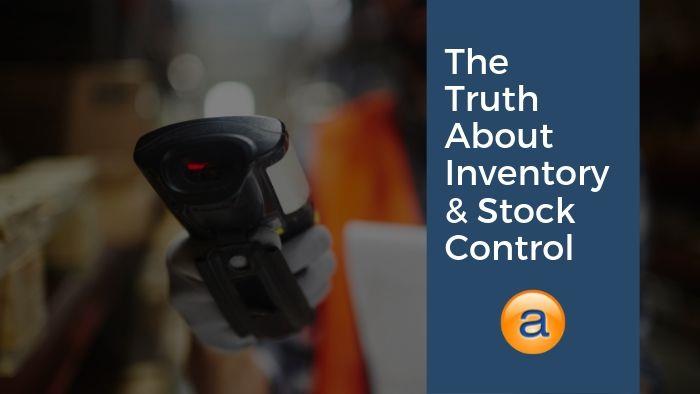Inventory and Stock Control
What’s the real truth about Inventory and Stock Control? Inventory is a list or lists of items relating to a business. Stock Control is the process of managing the inventory for us.
Many small to medium-sized businesses in Australia simply forget about it. Businesses that don’t take responsibility for their stock don’t value their business.
A business’ stock is part of the value the business holds. By not knowing what stock you have on hand, or not caring about it, you risk your business. Regular stocktakes help to alleviate this.
What happens to your stock between purchasing and selling it is valuable. It’s what keeps your business running and delivers better profits.
Stock and Inventory Loss
How fast do you think a business can lose a $1,000? A day, a week, a month, most definitely a year!
Every business has lost money on their inventory at least once. It might have been because they didn’t invoice a customer in the right way. Recording stock wastage wrong has resulted in a loss.
If you’re reading this now and thinking to yourself, “My business hasn’t lost anything”, you’re wrong.
Now, it’s not your fault, but let’s take a look at where you might be making some mistakes.
By taking care of your inventory, you’re controlling your stock and getting the most value.
Stock Control
Controlling your stock means you need to have a system in place. You should also look at your business by taking a step back, allowing you to see what’s going on.
Here’s some questions for you:
- Do you need all the items to sell?
- What happens to damaged stock on arrival, in your warehouse, or during shipping?
- Can staff members use or consume your product as part of their job?
- If they can, how is it recorded and valued, and who’s responsibility is it to do that.
There’s no real right or wrong answers to the questions above. The requirements of each business will be as different as their products.
Real Value Calculations
Consider this, a business of 15 staff where you sell cans of Coke for $3 to customers. Each staff member can drink 1 can for free each shift that they work.
How is that can of coke recorded as no longer being part of the inventory?
Some quick calculations add up fast:
Let’s say the can of Coke costs the business 0.73c. If every staff member has a can for each shift, over a 5-day work week, that’s equal to (0.73 x 15) x 5 = $54.75 a week.
In only 19 weeks, and only from cans of Coke, this business gives away $1,000, as 19 x 54.75 = $1040.25. Not only that, but that’s a loss of over $3,234.75 in potential profit!
So they are down in revenue over $4,000, and that’s the real truth about inventory and saving money!
If you’re not tracking where your inventory is going in your business and why, how do you know how much money you are losing?
This particular business might consider it a small expense to keep staff morale up. That’s fine, but the cans still need to be calculated as part of the inventory and recorded as waste.
If items are not recorded right, the stock variance will get affected. The stock valuation is also affected and can cause reports to be incorrect.
Now, it’s an easy example to think of a can of Coke, but what does your business stock as inventory? I’m willing to bet that it costs you more than $0.73c.
Stock Adjustment Reasons
More than staff taking stock for personal use and not recording it though is wastage and writing off. You will need to use these for varying reasons.
Manufacturers that produce products custom-made to order will have a lot of wastage. Whatever you produce, there is at some point bound to be a loss of a profit due to wastage.
If you work in a timber yard, you might be losing 10cm from the end of a plank. Plastic flashing that needs trimming, or metal pipe work that requires grinding. Each situation is different, but accounting for the waste needs recording. This also helps you to realise where your profits are going.
Manufacturers will often repeat a product again and again, so wastage can add up fast. Accounting for the lost wastage helps you realise where it’s going. You may not be able to re-use the wastage, but it’s accounted for.
Learning more about where wastage is occurring may help you change processes. Are there two products that you make often that could configured to create less waste? This is where stock control matters more than sales.
Conclusion
Accentis Enterprise is the Inventory and Stock Control system your business needs. Easy to use business management software that allows you to record any and all wastage.
A robust stock control system will ensure that your inventory is bought, used and sold as needed. It easy for small to medium-sized businesses to lose money through dodgy stock control. Improve your processes and data accountability to improve your business overall.
Throughout the article, have you thought about where else you may be losing money? We have.
Accentis Enterprise is more than a simple stock control system. It includes other powerful business ERP features to help you improve your efficiency.
If you need payroll, time and attendance, job costing or project management, we’ve got your back. We also have a strong manufacturing, financial accounting, customer management and fixed assets.
Accentis Enterprise ERP software is the premier solution for small to medium-sized businesses. A complete manufacturing, wholesaling, distribution and service industry solution.
Control your stock and inventory better with a customisable, fully-integrated software package today! Start a conversation with us to find out how you can improve your business!

Are you ready to make more money for your business?
Click here to start your journey today!
